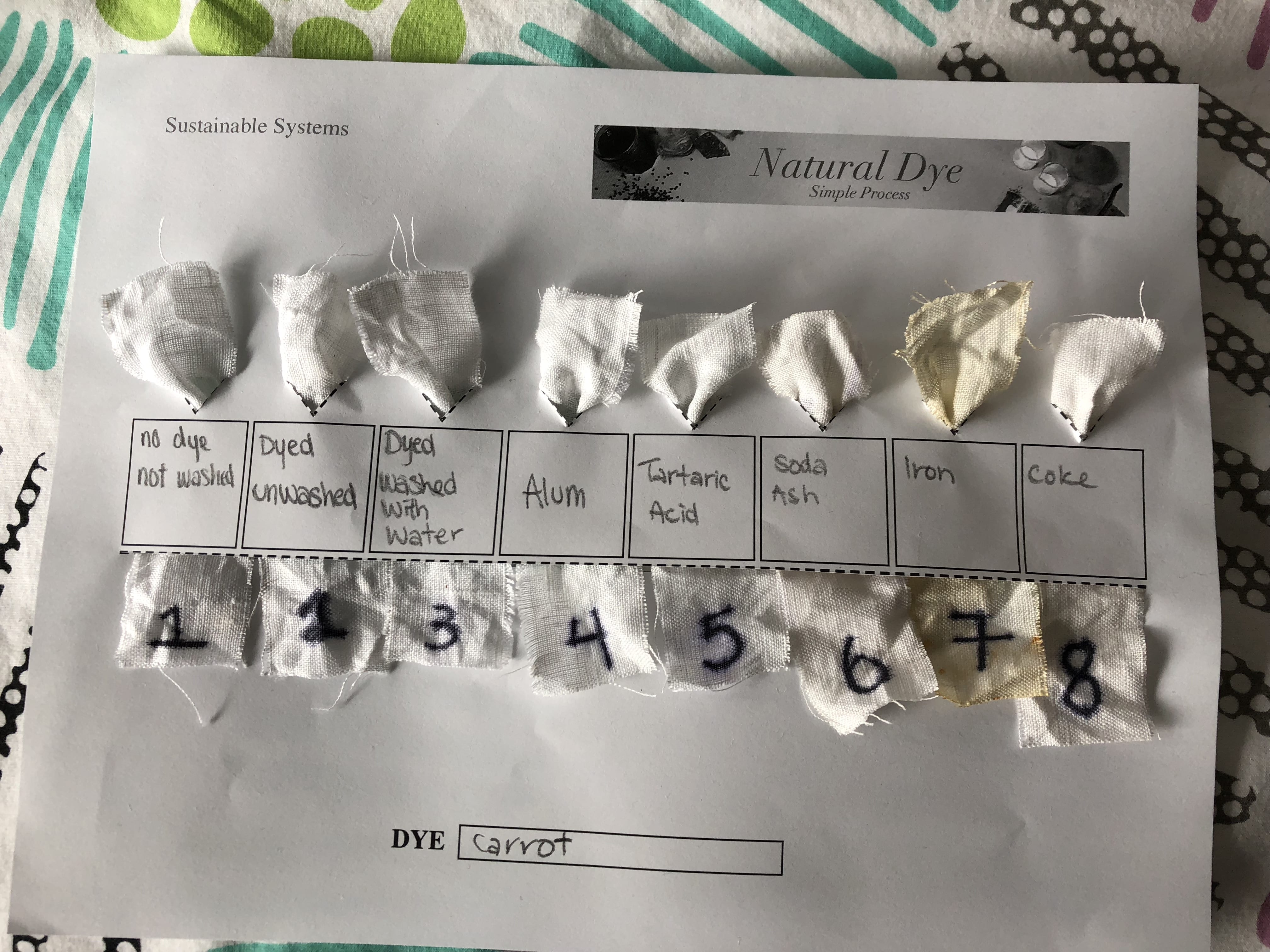Creating the dye:
Setting up the mordants:
Dyeing the fabrics:
Setting up the mordants:
Soaking the dyed fabric in the mordants:
All the trials:
The next day:
I chose carrots as my plant material that I bought at the Garden of Eden grocery store. I looked on their website and it says their produce is both local and international. Based on research I did about where carrots are grown I would assume the carrots were probably grown in California, Texas, Washington, Michigan, Florida, Colorado or Wisconsin. These are the main carrot producing states in the US. In fact California produces 63% of the country’s carrot output and therefore there is a good chance the carrots I bought were from there. This means they potentially travelled across the country. Based on this assumption, I researched how much water is used to grow carrots in California. I found it is strongly encouraged to not overwater carrots as it can cause bad color formation and may encourage disease. Concerning chemicals, the academic journal I found about carrot production in California suggests integrated pest management which helps minimize chemical controls. The only difference between the oily and clean wool samples was that the oily sample was slightly darker than the clean sample. The majority of the wool samples didn’t change much in colour. The carrot dye was very weak and there wasn’t much colour transferred to any of the samples. The biggest difference in both the cotton and wool samples was the iron rinsed one. In the wool samples it was green and in the cotton samples it was much more orange than the rest. The rest of the cotton samples were almost unchanged from before being put in the dye. In the wool samples; soda ash, Coca Cola and iron showed the largest colour changes from the dyed-not-rinsed, dyed-rinsed and not dyed samples. Iron, as I said was green while coke was dark beige and soda ash was a lighter beige. I looked up why iron creates these more drastic colours and found that it is very strong and can cause dramatic colour changes. It reacts with dyes that create tannin, which carrots do not contain, to create produces dark brown and gray. This shows that the chemicals are very strong in iron and it is more likely to create these drastic changes. I don’t think natural dyes would work as well with synthetic fibers because they have been chemically treated unlike the natural fabrics. I’m not very satisfied with the outcome because my carrot dye was not very strong. I put water down the drain that had picked up soap, alum, tartaric acid, soda ash, iron, Coca Cola and carrot dye. It is not amazing to put these chemicals down the drain but could be worse. Since it is only a small amount it is not as bad as if industrial quantities were dumped down the drain. In processing fabrics, the woven fabric undergoes a sizing agent to become much stronger. However, the sizing agents must be thoroughly removed before dyeing because they resist the dyes and chemicals. This removal method is called desizing. These agents would be removed using water solutions that will most likely be dumped down the drain. A potential solution to this would be to somehow create a sizing agent that didn’t have to be removed. I might try to use other natural dyes in the future but will not do it very often. I think natural dyes are uncommon because, like my carrot dye, they can be more faint and time consuming. I think natural dyes are safer for the environment because they already occur in nature.














